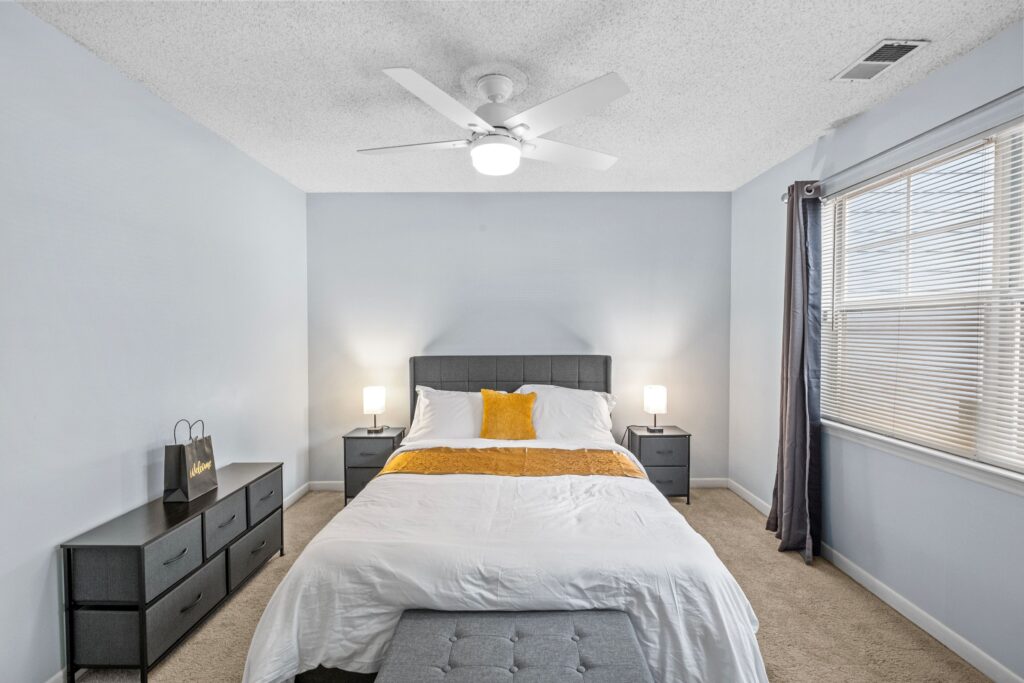Disasters can hit when we least expect them—house fires, water damage, storms, and other unexpected events can make your home unlivable in an instant. When that happens, one of the most important questions you’ll ask is: “How much will insurance pay for temporary housing?”
The good news is that most homeowners and renters insurance policies include coverage for Loss of Use, also known as Additional Living Expenses (ALE). This coverage helps pay for temporary housing and other necessary costs while your home is being repaired or rebuilt.
In this blog, we’ll break down how much insurance typically pays, what’s covered, how to get approved, and what to expect from your temporary housing options.
What Is Temporary Housing Insurance Coverage?
Temporary housing coverage is part of your homeowner’s or renter’s insurance policy under the “Loss of Use” or “Additional Living Expenses” section. It kicks in when your home becomes uninhabitable due to a covered peril, such as:
- Fire or smoke damage
- Water damage (from burst pipes, for example)
- Storm or wind damage
- Natural disasters (depending on your policy)
- Vandalism or theft
If your insurance claim is approved, your insurer will reimburse you for the cost of living elsewhere while your home is being repaired or rebuilt.

So, How Much Will Insurance Actually Pay?
1. It Depends on Your Policy Limits
Every policy has a different Loss of Use limit. It may be calculated in one of two ways:
Percentage of Your Dwelling Coverage
Most standard policies offer 20% to 30% of your dwelling limit for additional living expenses.
For example, if your home is insured for $300,000 and your Loss of Use limit is 20%, then you’d have $60,000 total to use for temporary housing and related expenses.
A Fixed Dollar Amount
Some policies—especially renters insurance—set a specific dollar limit (e.g., $15,000) for temporary housing.
2. Time Limits Apply
In addition to dollar limits, most insurers set a time limit for how long they’ll pay for temporary housing—often 12 to 24 months, depending on the severity of the damage and scope of repairs.
What Does Insurance Pay For During Temporary Housing?
Insurance companies don’t just cover rent—they cover the difference between your normal living expenses and your temporary ones. That means if you normally pay $1,500/month in mortgage or rent and you now need to rent a $2,500/month short-term furnished apartment, your insurer may reimburse the $1,000 difference.
Here’s what’s typically covered:
| Expense Category | Covered? | Notes |
|---|---|---|
| Short-term housing | ✅ | Hotels, apartments, corporate housing, etc. |
| Utilities (electric/gas) | ✅ | If not included in rent |
| Laundry services | ✅ | If you don’t have access to laundry |
| Storage fees | ✅ | For storing undamaged belongings |
| Pet boarding | ✅ | If your temporary housing doesn’t allow pets |
| Increased transportation | ✅ | If you’re commuting further than usual |
| Meals | ✅/❌ | Only if your temp home lacks a kitchen |
What Kind of Temporary Housing Will Insurance Cover?
Insurance companies typically offer or reimburse for three types of temporary housing:
1. Hotel Stays
Best for short-term displacement (1–14 days). Most insurers will cover a hotel room if your home is temporarily uninhabitable due to water damage or smoke cleanup.
2. Furnished Short-Term Rentals
Ideal for longer stays. These rentals come fully furnished with kitchens, making them more cost-effective than long hotel stays. Month-to-month leases are often used here, and insurers may work with corporate housing providers or allow you to find your own.
3. Extended Stay Hotels
These are a hybrid between hotels and apartments, with weekly rates and kitchenettes. They’re often used as a mid-term solution while waiting for a more comfortable rental to open up.
How to Get Temporary Housing Covered by Insurance
Step 1: File a Claim Immediately
Contact your insurance company as soon as your home becomes uninhabitable. Ask to speak with your claims adjuster and request ALE benefits.
Step 2: Ask About Your Coverage Limits
Request specific info on your ALE coverage, including the total dollar limit, time frame, and what expenses are eligible for reimbursement.
Step 3: Secure Temporary Housing
You may be placed in a hotel first. If your displacement will last longer, ask your insurer if they have a temporary housing coordinator or if you can find your own place and submit it for approval.
Step 4: Track and Save Receipts
You’ll need to show proof of:
- Rent payments or invoices
- Utility bills
- Receipts for meals, gas, laundry, and storage
- Any costs related to displacement
Most insurers will reimburse you weekly or monthly based on submitted documentation.
Tips to Maximize Your Insurance Benefits
- Choose reasonably priced housing
Your insurer may deny reimbursements if your rental is significantly more expensive than your regular living costs. - Opt for furnished rentals
This saves you money and time—and most insurance companies prefer it because it reduces additional expenses. - Communicate often with your adjuster
Keep your adjuster in the loop about where you’re staying, how long, and any delays in repairs. - Know your rights
If your insurance company delays or denies coverage unfairly, consult a public adjuster or an attorney who specializes in property claims.
Common Questions
Will insurance pay the full cost of rent during temporary housing?
Not always. It typically pays the difference between your normal rent or mortgage and the cost of temporary housing.
Can I choose where I stay?
Yes, though the insurer may ask for quotes or cost justification. If they offer a place and you choose a more expensive one, you may be responsible for the difference.
Can I stay in a month-to-month furnished rental?
Absolutely. These are often preferred because they’re flexible, cost-effective, and more comfortable than a hotel for long stays.
Final Thoughts
So, how much will insurance pay for temporary housing? It depends on your policy—but the goal is to maintain your standard of living while your home is being repaired. That might mean staying in a hotel for a few days, or in a furnished month-to-month rental for several months.
Your job is to understand your coverage, choose wisely, and keep records. Your insurer’s job is to help you get through this disruption as smoothly as possible.
Need help finding an insurance-approved, fully furnished rental in your area? Reach out to our team—we specialize in helping displaced homeowners and policyholders find high-quality temporary housing fast.

